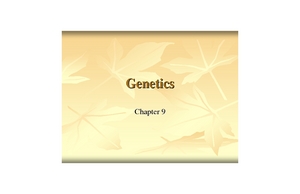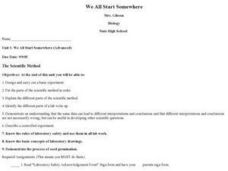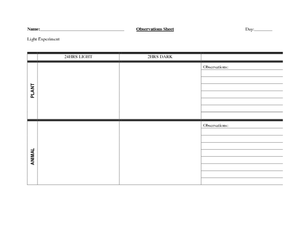Curated OER
Discovering the Physical Geography of Washington
Pupils develop a mental map of the state of Washington and draw it on paper. Using the Virtual Atlas, they identify the physical features of the state and draw them on their map. They also examine the populations and diversity of the...
Curated OER
The Living Weapon
Students explore American history, military strategy and scientific discovery near the end of the World War II era. They examine the principles of the Cold War, pacifism, and the desire to keep government programs secret from the...
Curated OER
Hazard Mitigation: Bioterrorism
Students discuss different ways to spread infectious diseases. In this bioterrorism lesson, students model the rate of smoke emission using CalRoad software. They analyze the effects of airborne release of biological...
Curated OER
History and Development of the Microscope
In this microscope worksheet, young scholars review how microscopes work and how early scientists figured out how microscopes could help them with their discoveries. This worksheet has 3 fill in the blank and 7 short answer questions.
Curated OER
Disease & Epidemics
Pupils investigate diseases and epidemics from a biological and social perspective. They analyze the management of disease, use and misuse of antibiotics and vaccinations, and development of new treatments.
Curated OER
City Wildlife in a Vase
Students examine a still-life painting. They discuss the observation of nature by scientists and artists and explore the symbolism of biological life cycles depicted in a painting.
Curated OER
Just Jelly
Students identify common gelatinous zooplankton in the Canada Basin and their ecological role. They compare and contrast feeding strategies of at least three different types of gelatinous zooplankton.
Curated OER
Lights in the Deep
Students describe, compare, and contrast bioluminescence, fluorescence, phosphorescence, and chemiluminescence. They explain the role of three major components of bioluminescent systems. They ex
Curated OER
Genetics
Students identify literary elements in each selection while learning about diversity and the struggle for equality in the United States. They use their knowledge to express the emotion and key literary elements in each piece through...
Curated OER
Nutrient Biochemistry
In this lipids activity, students review the different types of lipids and how lipids are used by the body. This activity has 3 drawings and 27 fill in the blank statements.
Curated OER
A Scientific Approach to Teaching about Evolution
Students examine fossils and analyzing their significance in relation to theories of evolution. Hand-outs are provided. This lesson could be supplementary to a broader unit on evolution or geology.
Curated OER
Genetics and Hypermedia
Pupils view presentations created by HyperCard and HyperStudio. They observe the multimedia presentation regarding Genetics. They observe the information in regards to their current unit.
Virginia Department of Education
Structure and Function of Cell Membranes
Lead your high school class on an exploration inside the cell. Individuals investigate the relationships between cells structure and function given their relative locations on the cell membrane. They explore the concept of homeostasis...
Virginia Department of Education
The Ratio of Surface Area to Volume
Demonstrate the ratio of surface area to volume in your high school class by using phenolphthalein, gelatin, and an onion. Intrigue the class by leading a discussion on osmosis and diffusion, then making "scientific jello." Participants...
National Park Service
A Peace Park
Piece together American and Canadian culture by learning about peace parks! Scholars discuss differences between Waterton Lakes National Park and Glacier National Park as a group. The newly-informed pupils answers questions about this...
Curated OER
Human Cloning, Genetic Engineering and Privacy
Review the aspects of human cloning and the moral issues associated with it. Individually, your students will keep a list of the articles related to this issue and research issues related to the ethic issues people are concerned with....
Curated OER
DNA Basics, Bacterial Cell Walls
Some basic descriptions of DNA and the appearance of structures in a bacteria are included along with great diagrams. The presentation has clear, but detailed slides, and your students will find the information about Gram staining easy...
Curated OER
Photosynthesis
If you need summary notes for independent study, or a Powerpoint to review as a class, then these slides will fit your need. There are really great, quite detailed, diagrams and some slides to summarize the 2 stages of reactions in...
Curated OER
Selecting Soil Organisms in Compost
Students demonstrate that many of the enzyme systems needed to break down--and therefore clean up-society's wastes already exist in nature among the decomposers. They select the best starch-munching organisms by altering the environment...
Curated OER
CONSTRUCTION OF A HEMOGLOBIN GENE
High schoolers use research to see how eight pairs of triplets are equivalent to part of a gene and control a part of heredity. They also understand how red blood corpuscles manufacture normal hemoglobin.
Curated OER
How Smoking Affects Our Repiratory System
Seventh graders examine the dangers of smoking. In this life science lesson, 7th graders survey their schoolmates about the factors that would influence them to smoke. They present their findings in class by creating a presentation.
Curated OER
We All Start Somewhere
Students demonstrate an understanding that the same data can lead to different interpretations and conclusions and that different interpretations and conclusions are not necessarily wrong, but can be useful in developing other scientific...
Curated OER
Organisms – Their Needs
Students compare and contrast different organisms characteristics. In this life science lesson, students design an experiment about plants and animals needs. They collect data and write their conclusion about the experiment.
Curated OER
Plants
Students identify and label parts of a plant. They will construct a plant from art material and describe the purpose of each part for the plants survival. Students author a book with pictures and words or a story about a plant.

























